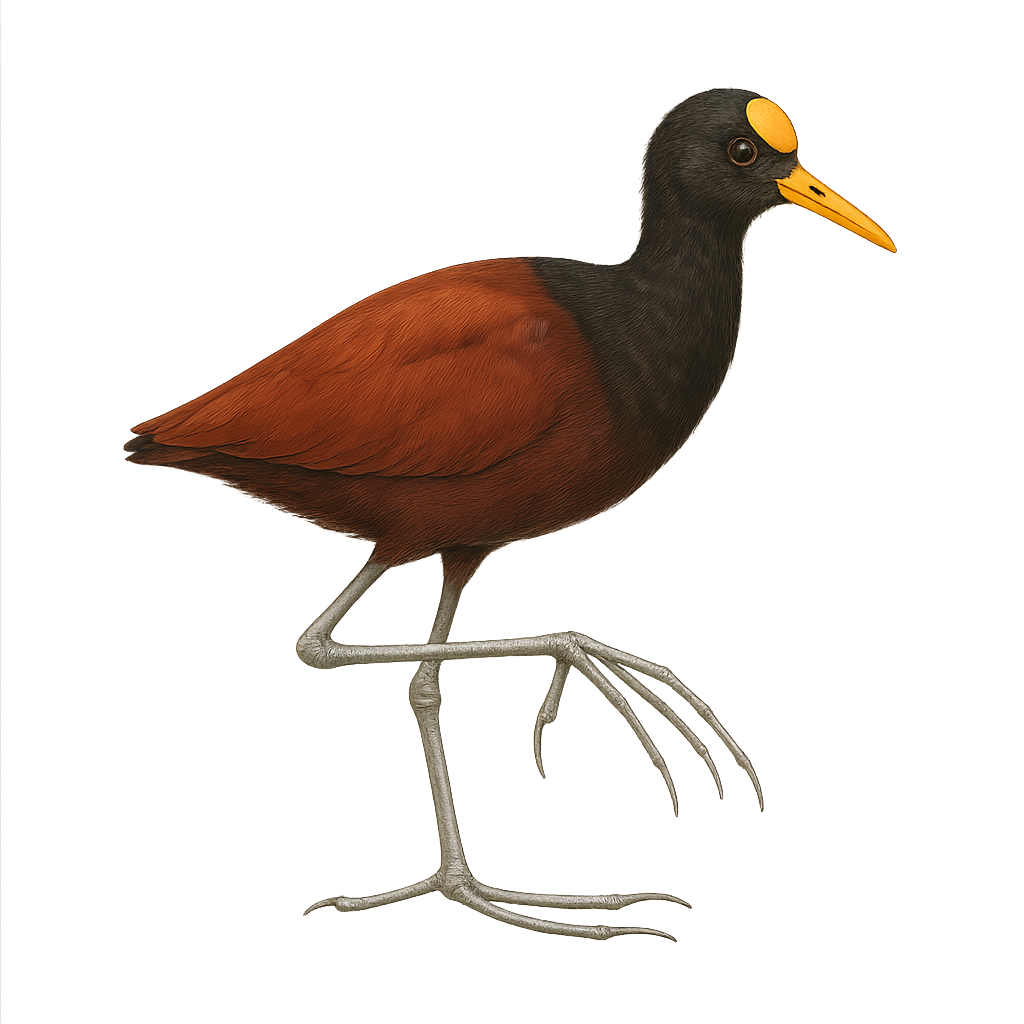Your wildlife photography guide.
Explore the northern jacana in detail, study its behavior, prepare your shots.
Where to observe and photograph the northern jacana in the wild
Learn where and when to spot the northern jacana in the wild, how to identify the species based on distinctive features, and what natural environments it inhabits. The WildlifePhotographer app offers tailored photography tips that reflect the northern jacana’s behavior, helping you capture better wildlife images. Explore the full species profile for key information including description, habitat, active periods, and approach techniques.
Northern Jacana
Scientific name: Jacana spinosa

IUCN Status: Least Concern
Family: JACANIDAE
Group: Birds
Sensitivity to human approach: Tolerant
Minimum approach distance: 10 m
Courtship display: April to June
Incubation: 22-24 jours
Hatchings: April to July
Habitat:
Wetlands, marshes, lakes
Activity period :
Primarily active during the day, with peak activity in the morning and late afternoon.
Identification and description:
The Northern Jacana, or Jacana spinosa, is a waterbird known for its long legs and elongated toes, allowing it to walk effortlessly on lily pads and other floating vegetation. It features a reddish-brown plumage with bronze-tinted wings and a bright yellow bill extending into a frontal shield. This bird is primarily found in the wetlands of Central America and the southern United States. The Northern Jacana is noted for its polyandrous behavior, where the female mates with multiple males, each taking care of a nest. It feeds mainly on insects, small mollusks, and seeds found on the water's surface.
Recommended lens:
400mm – adjust based on distance, desired framing (portrait or habitat), and approach conditions.
Photography tips:
To photograph the Northern Jacana, it is advisable to use a telephoto lens of at least 400mm to capture detailed images without disturbing the bird. Look for wetlands where these birds are active, and be patient to observe their unique behavior. Morning or afternoon light is ideal for capturing vibrant colors and sharp details. Use a tripod to stabilize your camera and wait for the bird to approach your position for close-up shots.
The WildlifePhotographer App is coming soon!
Be the first to explore the best nature spots, track rutting seasons, log your observations, and observe more wildlife.
Already 1 430 wildlife lovers subscribed worldwide

